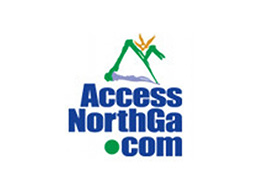It was announced on Monday that the Supplemental Nutrition Assistance Program (SNAP) will be partially funded in November.
That comes after two federal judges ruled on Friday that President Donald Trump’s administration must continue to pay for SNAP by using emergency reserve funds.
In the midst of all of the uncertainty surrounded the program that roughly 1 in 8 Americans utilize, the Georgia Mountain Food Bank’s (GMFB’s) Executive Director Rebecca Thurman provided an update on WDUN’s “Mornings on Maine Street” on Monday.
“In 2024 for every meal the Feeding Georgia food bank network distributed, SNAP distributed nine,” Thurman said. “With SNAP being out, the food bank network is expected to pick up those 10 meals … there’s absolutely no way we can do all of that, but we’re certainly going to make our best effort to make sure nobody goes hungry.”
The GMFB is within the Feeding Georgia network, and serves Hall, Dawson, Forsyth, Lumpkin, and Union Counties.
They have an emergency donation link live on their website currently, and Thurman said they have scheduled additional distributions.
“We’ve ordered a lot of food,” Thurman said. “We’re making sure that we publish where the food pantries are located … we have three truckloads of food coming in right now that were approved by my board to do emergency food distribution.”
GMFB has an interactive map where users can locate where a local pantry is by putting in their address. They have 59 pantries across their five-county area that serves around 700,000 meals a month.
“The food insecure population that we record doesn’t account for all these now federal employees that are furloughed or out of work,” Thurman added.
Thurman said normally they may get five or six people that come directly to the food bank, and saw that number just on Friday alone.
This assistance comes as Gwinnett County also announced on Friday that they are allocating $250,000 to help families access essential food and hygiene products.
There’s been no indication if Hall County or any other northeast Georgia counties will follow suit.
Counties in coverage area by % of households on SNAP:
- Habersham: 16.7%
- Lumpkin: 16.4%
- Barrow: 15%
- Banks: 14.8%
- Hall: 13.9%
- White: 13.5%
- Rabun: 13.1%
- Jackson: 12.4%
- Towns: 12.2%
- Gwinnett: 11.2%
- Dawson: 10.6%
- Union: 10.4%
- Forsyth: 4.4%
Thurman did note a bleak situation, with food availability going down due to costs and other factors, although demand is up by about 30%.
SNAP costs the federal government around $8-billion to operate per month nationally. The government says that the emergency funding will supply about $4.65-billion for November.
Some states have ramped up efforts to bridge the gap in the interim, with states like Louisiana supplying direct financial aid. 35 states and Washington, D.C. are providing some sort of aid. One notable exception is Georgia.
Georgia has $14.6-billion in general fund surplus accounts to utilize and roughly $5.6-billion in “rainy day” funds.
It would cost around $3.1-billion to fund SNAP for Georgians for the entire year.
In a statement on Thursday, Governor Brian Kemp said that the state would not provide any assistance.
“In the latest example of D.C. Democrats putting bad politics over the people they claim to care about, Senators Ossoff and Warnock and others in their party are denying hundreds of thousands of Georgians the SNAP benefits they need to feed their families,” Kemp said. “Their repeated failure to reopen the federal government will be felt at kitchen tables all around the state, right as we approach the holidays.
The post How local food banks are helping as SNAP funding will be partially funded for November appeared first on AccessWdun.




